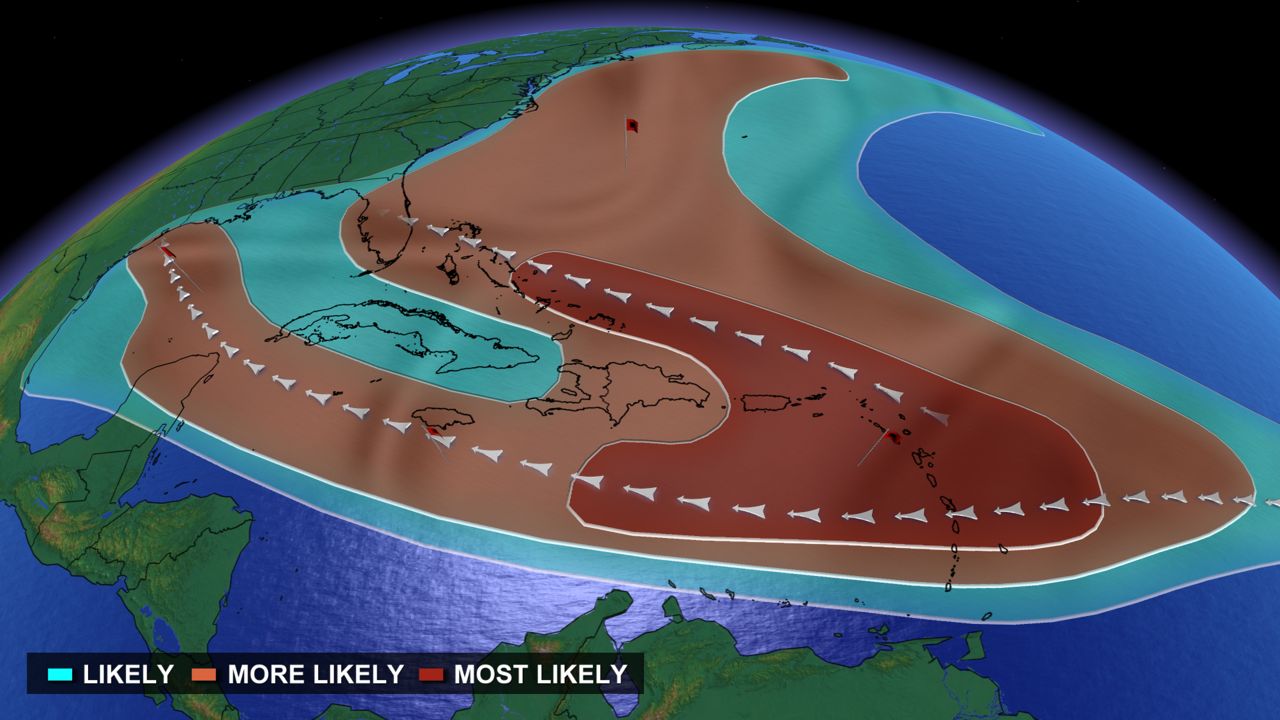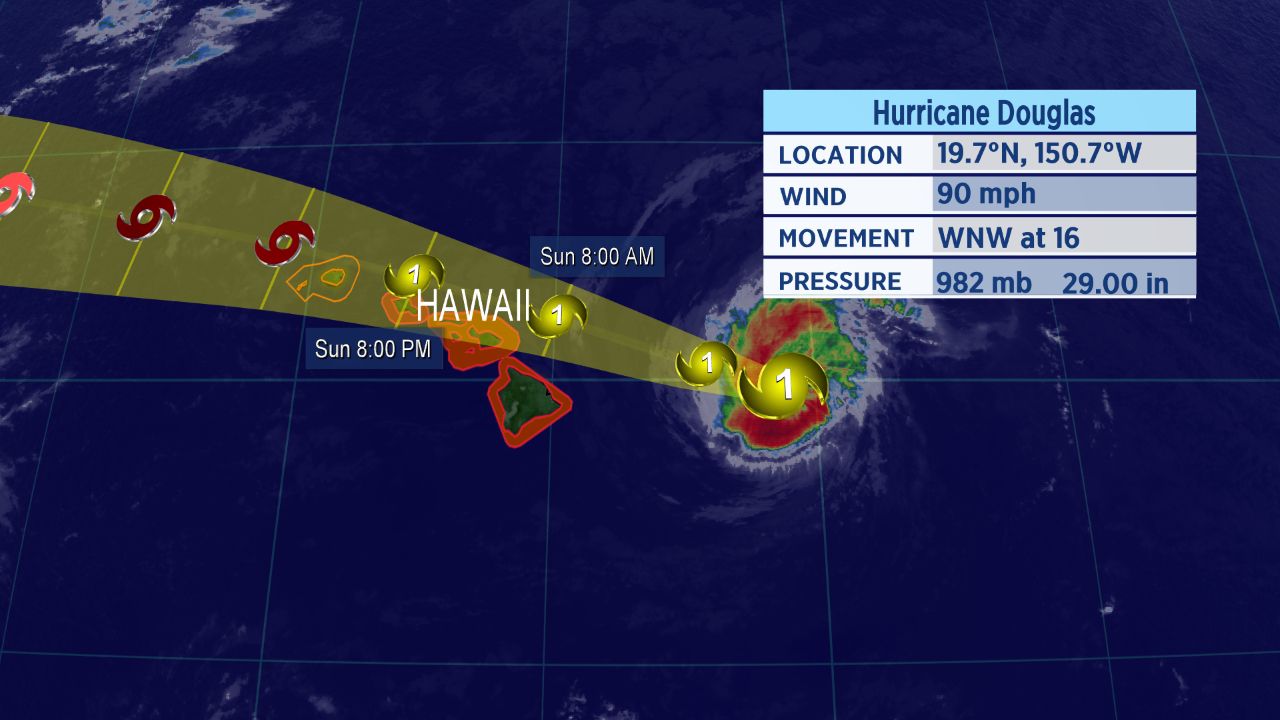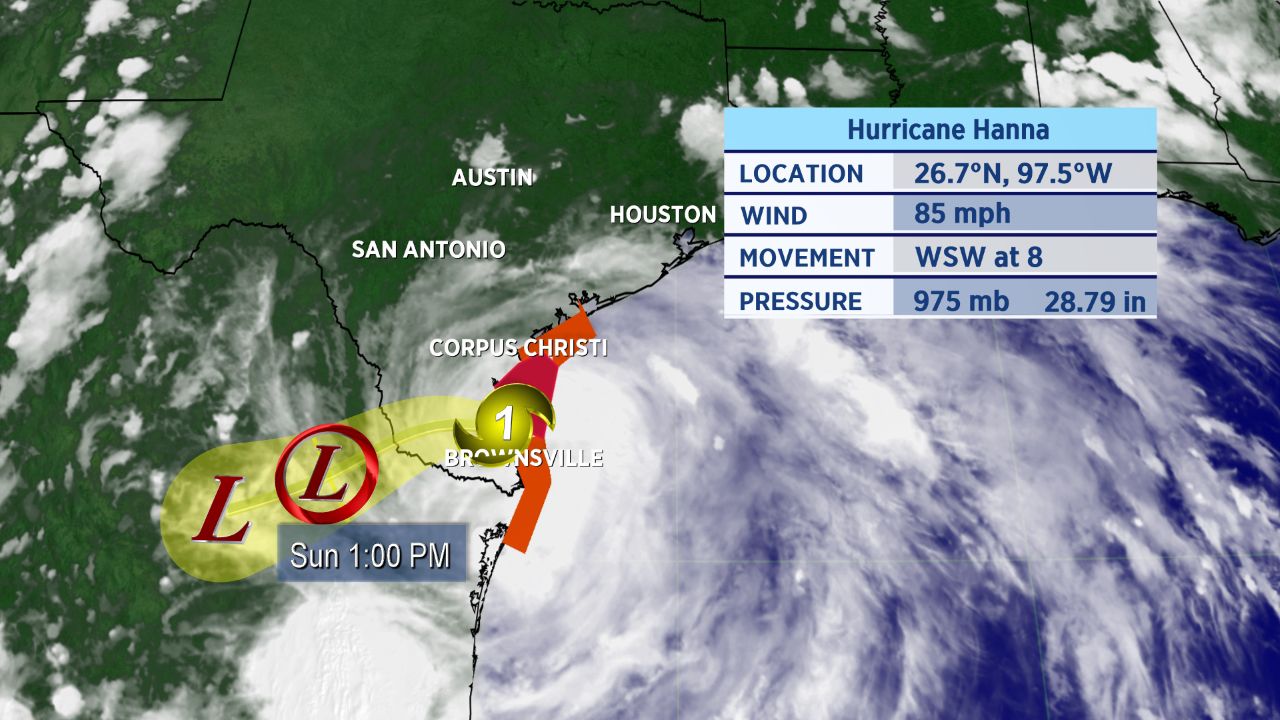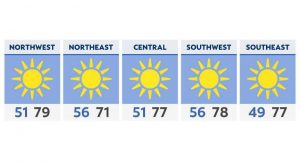Hanna rapidly strengthened into a potent, Category 1 hurricane before making landfall on Padre Island, Texas on Saturday evening.
Hanna made landfall as a Category 1 storm with maximum sustained winds of 90 mph. The storm, though, has already begun to weaken as it continues to move onshore tonight.
Meanwhile once-Tropical Storm Gonzalo, in the Atlantic, has been declared a remnant low as it moved through the southern Windward Islands.
In the eastern Pacific, Hurricane Douglas continues to weaken as it approaches Hawaii, but signficant impacts are possible from that storm, starting on Sunday.
Hanna Makes Landfall

Hurricane Hanna’s forecast track.
Hurricane Hanna became the first landfalling Atlantic hurricane of the 2020 season on Saturday evening.
Hanna’s first landfall took place over Padre Island, Texas around 5pm CDT on Saturday evening. Hanna made a second landfall over Kenedy County, Texas on Saturday about an hour later.
Storm surge warnings are also in place for parts of the Texas coastline, stretching from Sargent to Baffin Bay, as of Saturday evening.
Heavy rain, storm surge, gusty winds and the potential for flash flooding appear to be the main threats with this system as it makes landfall this evening. As much as 10 inches of rain could fall from the storm, particularly in the Rio Grande Valley of far southern Texas.
Hanna is the eighth named storm of the Atlantic’s season-to-date, and the earliest “H” named storm on record. According to the National Hurricane Center’s climatology records, the eighth storm of the season doesn’t take place until September 24th, on average.
Hanna is also the first hurricane of the 2020 Atlantic season.
Gonzalo Dissipates
Meanwhile, Gonzalo has weakened and now been declared a remnant low. Increased wind shear and dry air took its toll on the storm as it tracked west in the eastern Caribbean.
All warnings have expired for the island nations of Grenada and St. Vincent and the Grenadines, along with Tobago.
Heavy rain and mudslides could still impact the mountainous islands of the eastern Caribbean.
This could all be a potential sign that the central Atlantic Ocean is starting to kick into gear. As July turns into August, the so-called “Cabo Verde season” starts to heat up.
That’s when storms rolling off the western coast of Africa start to become stronger and more common, thanks to reduced dust from the Saharan Desert and warmer sea-surface temperatures in the tropical Atlantic Ocean.

Typical August tropical development areas in the Atlantic
Abnormally warm sea-surface temperatures across most of the Atlantic basin could help fuel more storms as the summer wears on. A strong tropical wave in the central Atlantic has high odds of becoming the next named storm in the basin later this week.
If it acquired a name, it’d be Isaias, the ninth storm of the busy Atlantic season to date.
Hurricane Warning Issued for Parts of Hawaii

Hurricane Douglas’ forecast track.
If two weren’t enough, in the Pacific Ocean, Hurricane Douglas formed on Wednesday, becoming the first hurricane in that basin so far this season. By Thursday evening, it reached major Category 4 strength, with maximum sustained winds of 130 mph.
The storm has since weakened considerably, now a Category 1 hurricane with winds of 90 mph.
A hurricane warning has been issued for the island of Oahu as conditions are expected to rapidly deteriorate on Sunday.
Tropical storm warnings are also in effect for Molokai, Lanai, Maui and the Big Island of Hawaii, where hurricane watches are also in place.
Douglas will continue to battle colder sea-surface temperatures, and it could weaken further as it approaches Hawaii.
Unlike the Atlantic, the eastern Pacific has been unusually quiet so far this season. Including Douglas, only four named storms and one hurricane have taken place so far this season.
Typically, the first hurricane in the eastern Pacific forms by late June.




